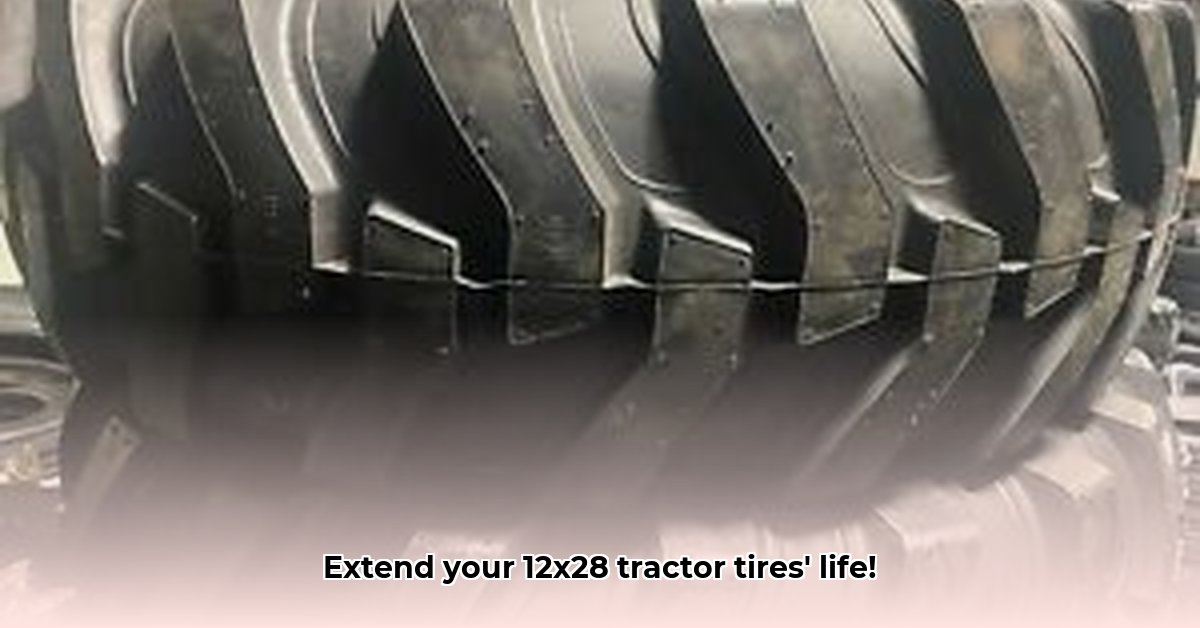
Understanding 12x28 Tractor Tires: Essential Considerations for Sustainable Farming
12x28 tractor tires are a cornerstone of efficient and environmentally responsible farming. Their size indicates a capacity for heavier loads and larger tractors, often employed in extensive agricultural operations. Optimizing their lifespan directly impacts fuel consumption, soil compaction, and overall farm profitability. This guide provides actionable steps to maximize the life of your 12x28 tires while minimizing environmental impact. Did you know that proper tire maintenance can increase fuel efficiency by up to 10%? Learn more about BKT tractor tires here.
Technical Specifications and Performance: Key Factors to Consider
Selecting the appropriate 12x28 tire requires understanding key technical specifications. These specifications directly impact performance, fuel efficiency, and soil compaction.
Radial vs. Bias-Ply Construction: Radial tires (with plies arranged radially) generally offer a smoother ride, better fuel economy, and longer lifespan due to their flexible construction. Bias-ply tires (with plies arranged at an angle) are often more durable and better suited for rough terrain, though they typically offer less fuel efficiency. The choice depends on your specific farming conditions and priorities.
Tread Patterns: Tread patterns significantly influence traction and soil compaction. Aggressive lugs provide superior grip in muddy or wet conditions, while shallower patterns minimize soil disturbance on drier ground. Choosing the right pattern is crucial for optimizing both traction and soil health.
Load Capacity: The load capacity, often expressed in pounds or kilograms, represents the maximum weight a tire can safely carry. Exceeding this limit leads to premature wear, potential tire failure, and increased soil compaction. Always ensure the tire's load capacity aligns with your tractor's weight and the implements used.
Selecting the Right 12x28 Tires: Matching Tires to Your Farm's Needs
Choosing the optimal 12x28 tires involves careful consideration of several factors. These factors ensure optimal performance and minimize negative environmental impacts.
Soil Conditions: Clay soils require tires providing excellent grip to minimize slip, whereas sandy soils benefit from wider tires that distribute weight and minimize compaction. The soil determines the tread pattern and tire width needed.
Intended Use: Tillage operations demand robust tires capable of withstanding high stress, while harvesting operations benefit from tires minimizing soil disturbance and potential crop damage.
Budget: While high-quality tires might seem expensive upfront, their longer lifespan and improved fuel efficiency often result in significant long-term cost savings. Consider the total cost of ownership.
Climate: Extreme temperatures and harsh weather conditions demand tires with enhanced durability and resistance to cracking or breakdown.
Sustainable Tire Practices: Extending Lifespan and Minimizing Environmental Impact
Sustainable agriculture necessitates responsible tire management. These practices contribute to both environmental stewardship and economic viability.
Proper Inflation: Maintaining correct tire pressure is crucial. Underinflation increases wear, reduces fuel efficiency, and compacts soil. Overinflation can damage the tire and impact ride quality. Regularly check pressure using a reliable gauge.
Regular Maintenance: Frequent inspections for cuts, bulges, embedded objects, or unusual wear patterns allow for early problem detection and timely repairs or replacements. This preventative maintenance extends tire lifespan and reduces downtime.
Tire Rotation: Rotating tires periodically ensures even wear and extends their overall lifespan, maximizing the return on your investment.
Responsible Disposal: When tires reach the end of their life, avoid discarding them in landfills. Explore recycling options or utilize tire disposal facilities that ensure environmentally sound practices.
Sustainable Tire Alternatives: Support manufacturers committed to developing tires from bio-based materials or employing more eco-friendly manufacturing processes. This emerging area offers promising solutions for a more sustainable future.
Troubleshooting Common 12x28 Tire Issues: Practical Solutions and Preventative Measures
Addressing common tire problems promptly prevents further damage and maintains operational efficiency.
Uneven Wear: This often points to incorrect inflation, alignment issues, or worn suspension components. Adjustment of tire pressure, alignment checks, and suspension inspections are crucial.
Frequent Punctures: Consider using puncture-resistant liners or selecting tires with enhanced puncture resistance.
Excessive Tread Wear: This indicates overloading, aggressive driving, or incorrect inflation. Adjusting loads, adopting a gentler driving style, and maintaining proper inflation can significantly improve tire life.
Vibration or Rough Ride: This could be due to tire imbalance, wheel bearing issues, or damaged rims. Balancing tires, checking wheel bearings, and inspecting rims are essential for maintaining optimal ride quality.
Conclusion: Maximizing Efficiency and Sustainability
Implementing these guidelines for selecting, maintaining, and responsibly disposing of your 12x28 tractor tires translates to enhanced farm efficiency, reduced environmental impact, and long-term cost savings. Remember, a sustainable approach to tire management is an investment in the future of your farm and the planet.